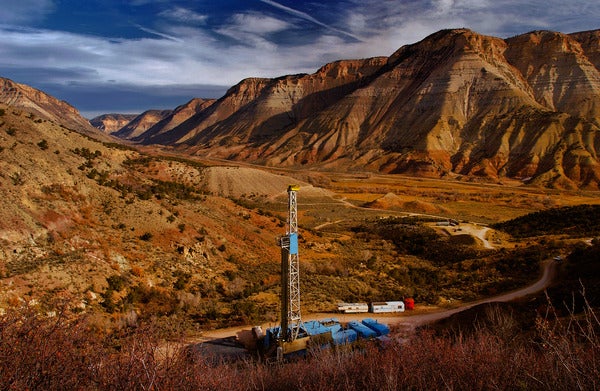New study shows need for accurate methane measurement at orphan oil wells and throughout industry
New research from Colorado State University reveals significant quantities of methane leaking from the state’s orphaned oil and gas wells — an urgent problem for the state to address as the number of abandoned oil and gas wells have surged in recent months. This study underlines the importance of both the state’s efforts to plug and remediate orphan wells as well as the efforts underway at the state Air Pollution Control Division to better understand and quantify methane emissions from oil and gas wells in the production sector.
When oil and gas wells stop being productive, they must be quickly and effectively plugged with cement to avoid leaking methane, toxic air pollution and salty, chemical-laden water into the surrounding environment. Unfortunately, oil and gas operators often go bankrupt or disappear, leaving their wells unplugged and orphaned. When this happens, states become responsible for the wells.
New study shows need for accurate methane measurement at orphan oil wells and throughout industry Share on XThe CSU research shows us the urgency of acting on this health and climate risk, and thanks to the Infrastructure Investment and Jobs Act, there’s federal funding to help states cover the cost of plugging orphan wells. Colorado is leading the way, and with more monitoring and more attention on this overlooked issue we can extend their approach around the nation.
Measurements Matter
Environmental regulations often don’t apply to abandoned and low-producing well sites, but this and other research suggests that overlooking emissions from these sources leads to more methane in the atmosphere. States need to find and fix these sites, and establish rules to prevent the problem from getting worse.
Colorado has long been a leader when it comes to methane regulation for the oil and gas industry, and its approach to orphan wells continues this trailblazing tradition. In June of 2022 Colorado significantly upgraded financial assurance requirements, clarified its approach to idle well management, and set up a state orphan well closure fund paid for by the oil and gas industry for wells that slip through the cracks.
Meanwhile, in July, the state adopted groundbreaking new methane pollution verification requirements for the oil and gas industry and the Air Pollution Control Division is now in the process of finalizing a protocol that will define how oil and gas producers measure and report their emissions to ensure compliance. This new study again underlines the importance of this effort and how older, sometimes overlooked, wells can be significant contributors to pollution problems.
The results of this week’s study are alarming, but the state’s new end-of-life oil and gas well regulatory system appears up to the task of managing the problem, the regulations included a $10 million annual industry-supplied fund to plug these wells, supplemented by the tens of millions of dollars flowing into the state to plug orphan wells from the Infrastructure Investment and Jobs Act.
With advanced methane monitoring tech (like the kind CSU used in their study), this backstop fund, and a growing methane measurement industry, the state is well-poised to tackle this issue in the short and long term. Plugging orphan wells is a win for public health, a win for climate, a great way to create jobs and Colorado’s strong efforts are sure to pay dividends.
To Know More, We Need to Measure More
There are 125,000 documented orphan wells around the nation, many hundreds of thousands of undocumented orphan wells, and around a million active oil and gas wells. Pronounced methane emissions from unexpected sources are not just confined to orphan wells, either. Wells with low production levels like marginal wells are also major sources of methane emissions, but mitigation approaches like well plugging do not apply to these wells.
In order to comprehensively find, understand, and manage the impact of emissions from this large and diverse fleet, we need continued federal and state efforts to improve our monitoring and measurement infrastructure. Colorado’s greenhouse gas verification protocol is one of the most promising possibilities for developing a robust and modernized approach to quantifying oil and gas methane emissions, and with a strong protocol the state can set an example for how to measure emissions from such a varied and important sector of the economy.
If more states follow Colorado’s lead and craft forward-thinking approaches to orphan wells and oil and gas methane pollution more generally, we can one day close the book on this era of abandoned super emitting sites. Advanced studies like CSU’s will help us get there by keeping attention on this issue until we can find and plug the worst offending orphan wells. The funding is here, the solutions are ready. Now it’s time to get people out there to put them into place!











